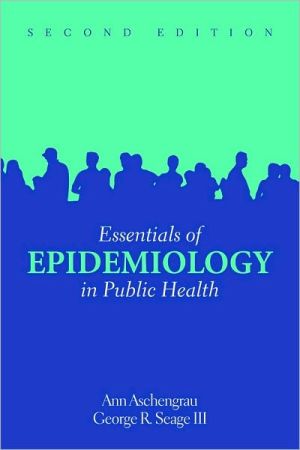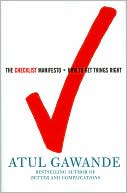Essentials of Epidemiology in Public Health
The second edition of this best selling text is comprehensive introduction to principles applied in the practice of epidemiology in public health. Featuring the most current data and includes new problems, this revision incorporates modern ideas in epidemiological thinking that have been largely omitted in other textbooks. This edition will familiarize readers with terminology and key concepts in the design, analysis, and interpretation of epidemiological research, giving students the tools...
Search in google:
Aschengrau (epidemiology, Boston University School of Public Health) and Seage (epidemiology, Harvard School of Public Health) incorporate the latest ideas in the field in this introduction to principles of epidemiology in public health. There is a major emphasis on study design, with separate chapters devoted to each of the three main analytic designs. Other chapters cover bias, confounding, and random error, as well as the concept of effect measure modification. Annotation ©2003 Book News, Inc., Portland, OR Doody Review Services Reviewer:James C. Torner, MS, PhD(University of Iowa College of Public Health)Description:This general introductory textbook provides an overview of the basics of epidemiology measurement, design, and issues.Purpose:This is an update of a prior version at more of a conceptual level to challenge public health students. This is a worthy objective because students need to think more critically about the conduct of research. In general, the book covers topics that are essential to the understanding of epidemiological methods.Audience:Although the book is oriented to new students, those learning about clinical research also would find it useful. Most of the chapters would be redundant for the advanced student. The authors are established professors of epidemiology.Features:The book covers the development of epidemiology, the measures used in epidemiological evaluation, and the study designs. The authors include several chapters on bias, confounding, and effect modification. The chapters on critical review and the epidemiological framework of causation are the main highlights.Assessment:The presentation is similar to other introductory texts. The critical assessment of design, measurement, and conduct is an important aspect of this book and is an improvement over the first edition.
Preface1The Approach and Evolution of Epidemiology12Measures of Disease Frequency333Comparing Disease Frequencies584Sources of Public Health Data745Descriptive Epidemiology956Overview of Epidemiologic Study Designs1357Experimental Studies1638Cohort Studies1939Case-Control Studies22110Bias25111Confounding28112Random Error29913Effect Measure Modification33414Guide to the Critical Review of Epidemiologic Studies34815The Epidemiologic Approach to Causation37516Screening in Public Health Practice402Answers to Exercises431Index448
\ From The CriticsReviewer: James C. Torner, MS, PhD(University of Iowa College of Public Health)\ Description: This general introductory textbook provides an overview of the basics of epidemiology measurement, design, and issues.\ Purpose: This is an update of a prior version at more of a conceptual level to challenge public health students. This is a worthy objective because students need to think more critically about the conduct of research. In general, the book covers topics that are essential to the understanding of epidemiological methods.\ Audience: Although the book is oriented to new students, those learning about clinical research also would find it useful. Most of the chapters would be redundant for the advanced student. The authors are established professors of epidemiology.\ Features: The book covers the development of epidemiology, the measures used in epidemiological evaluation, and the study designs. The authors include several chapters on bias, confounding, and effect modification. The chapters on critical review and the epidemiological framework of causation are the main highlights.\ Assessment: "The presentation is similar to other introductory texts. The critical assessment of design, measurement, and conduct is an important aspect of this book and is an improvement over the first edition. "\ \ \ \ \ From The CriticsReviewer: James C. Torner, MS, PhD(University of Iowa College of Public Health) \ Description: This general introductory textbook provides an overview of the basics of epidemiology measurement, design, and issues.\ Purpose: This is an update of a prior version at more of a conceptual level to challenge public health students. This is a worthy objective because students need to think more critically about the conduct of research. In general, the book covers topics that are essential to the understanding of epidemiological methods.\ Audience: Although the book is oriented to new students, those learning about clinical research also would find it useful. Most of the chapters would be redundant for the advanced student. The authors are established professors of epidemiology.\ Features: The book covers the development of epidemiology, the measures used in epidemiological evaluation, and the study designs. The authors include several chapters on bias, confounding, and effect modification. The chapters on critical review and the epidemiological framework of causation are the main highlights.\ Assessment: "The presentation is similar to other introductory texts. The critical assessment of design, measurement, and conduct is an important aspect of this book and is an improvement over the first edition. "\ \








